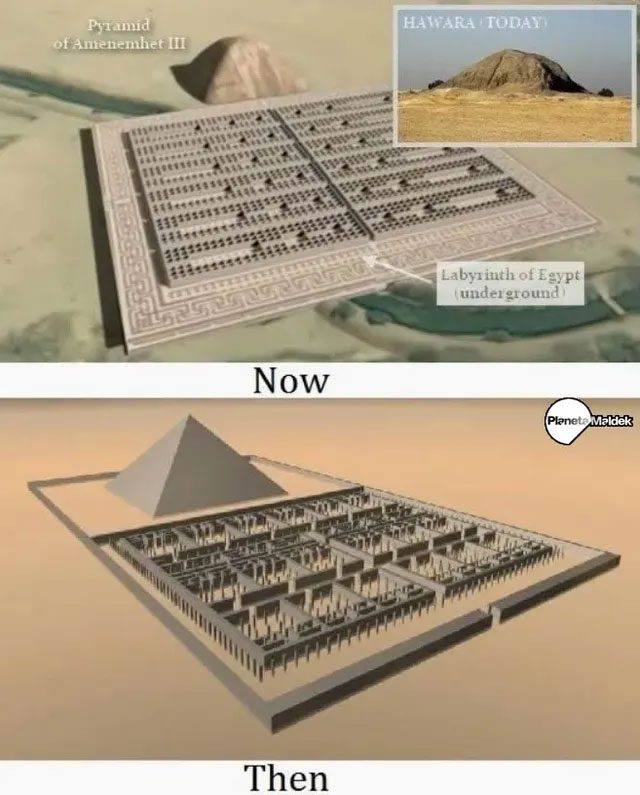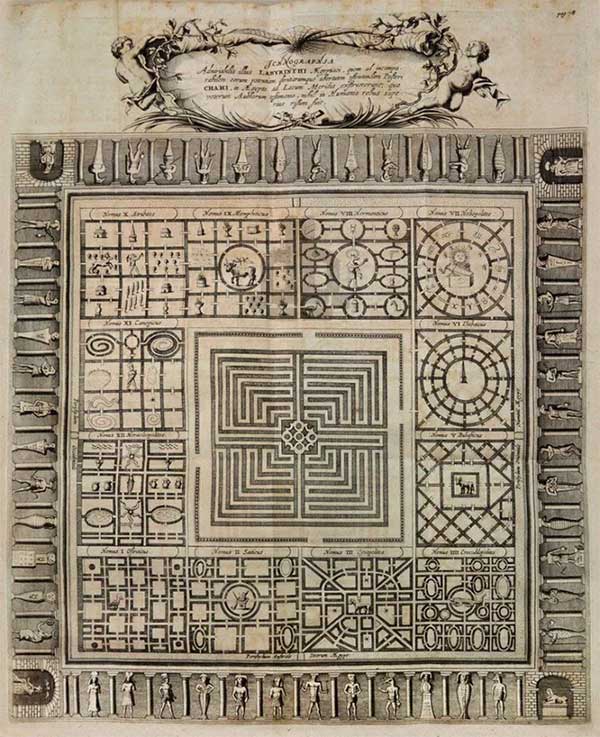Below the pyramids of Egypt lies a long-lost underground world filled with tombs, excavation chambers, and tunnels that have remained unexplored for centuries.
These underground passages are referenced in ancient Arab texts and legends, but they have only recently begun to be investigated. To this day, we are just uncovering the first existing clues and exploring them. But what exactly does this underground “kingdom” reveal to us about the pyramids, their relationship with the stars, and the mythical origins of Egyptian civilization?
According to the writings of Herodotus I in the 4th century BC, the ancient Greek historian wrote: “They (the twelve kings) were determined to join together to build a monument for themselves; their resolution led to the construction of a labyrinth, located near Lake Moiris and almost opposite to what is called the city of Crocodiles. I have seen it with my own eyes, and I find it larger than the words can describe.”
“If all the buildings and all the great works produced by the Hellenes (another name for Greeks) were gathered together, the labor and costs would pale in comparison to this labyrinth, although in reality both the temple in Ephesus and in Samos are valuable constructions.”
“Upon entering the sacred area, one finds a temple surrounded by columns, with 40 columns on each side. The temple has a roof made of a single stone slab, intricately carved and adorned with magnificent paintings. It contains relics from each king’s homeland as well as from the temples and rituals conducted therein, all crafted skillfully to create the most beautiful images.”

The labyrinth (as referred to by some in the distant past) is believed to be an extraordinary underground complex that may hold the key to the history of humanity. It is said that here, we might find detailed information about unknown civilizations in history, great empires, and rulers who inhabited this planet before history began.
One of the earliest serious attempts to study the labyrinth was in 1842, when a team was sent to Egypt by King Friedrich Wilhelm IV of Prussia. The research team, led by archaeologist Richard Lepsius, believed that the pyramid mentioned by historian Herodotus was the Pyramid of Amenemhat III located in the Hawara region of Faiyum, and that the city of Crocodiles was an ancient urban center in the Faiyum oasis valley.
Accordingly, this labyrinth was thought to be a legend passed down through generations. However, this perspective changed when Egyptologist Flinders Petrie discovered its “foundations.” These findings led experts to hypothesize that the labyrinth was destroyed during the reign of Ptolemy II and was used to construct the nearby city of Shedyt in honor of his wife, Arsinoe.
Described as comprising over 3,000 rooms filled with stunning paintings and hieroglyphics, this mysterious underground complex is located less than 100 km from Cairo at Hawara.
In 2008, a team of researchers from Belgium and Egypt arrived to investigate the mysterious underground complex, hoping to uncover and resolve the mysteries behind it. The Belgian-Egyptian expedition was able to confirm the presence of a temple located underground, not far from the Pyramid of Amenemhat III.

The expedition was named Mataha (Mataha means labyrinth in Arabic), and it confirmed the presence of the underground temple just south of the Pyramid of Amenemhat III.
In fact, this ancient labyrinth has been mentioned by many ancient writers, who asserted that it was a truly grand structure and could be the key to proving the existence of a lost civilization predating the ancient cultures associated with the region today. Some even claim that it is one of the keys to explaining the true history of humanity.
Since the 17th century, German scholar Athanasius Kircher relied on the writings describing the labyrinth by Greek historian Herodotus to create an image of the mysterious labyrinth. According to Kircher, the labyrinth of Egypt is located underground near the Pyramid of Amenemhat III in Hawara, about 100 km from the capital Cairo.
The results of the Mataha Expedition were published in the fall 2008 issue of the NRIAG scientific journal, and the findings were shared at a public conference at Ghent University. Shortly thereafter, Dr. Zahi Hawass, Secretary-General of the Supreme Council of Antiquities (Egypt), called for a halt to the publication of results due to national security restrictions in Egypt. The researchers patiently awaited Dr. Hawass to announce the study’s results.
However, this did not happen. And the information we can gather about this labyrinth is incredibly scarce; perhaps over time, it will gradually be forgotten by most of us.





















































